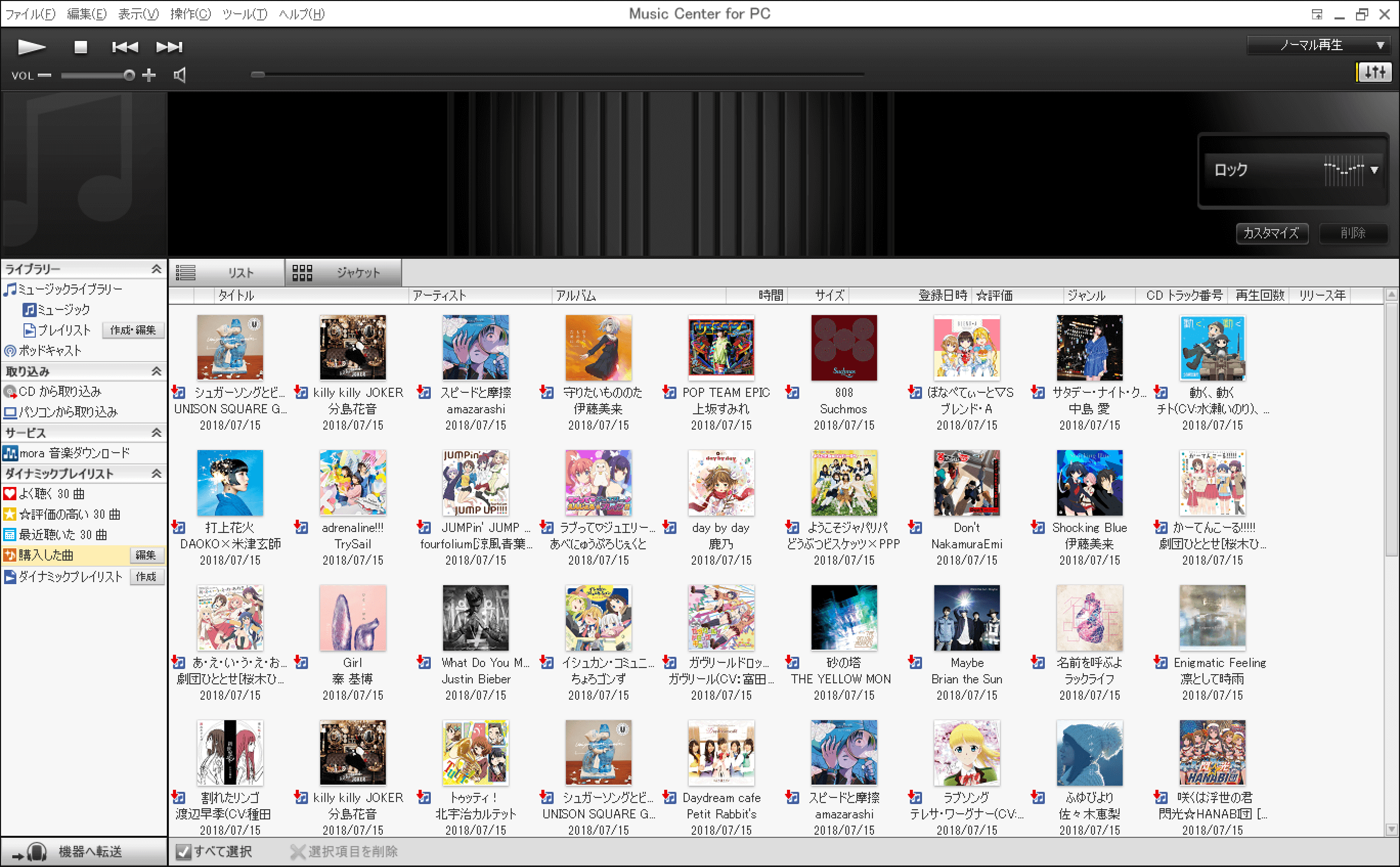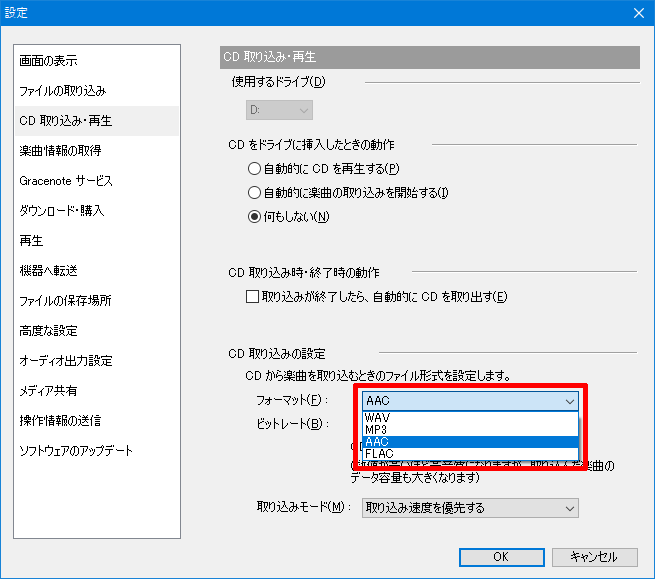Music Center For Pc
This app is for anyone with a compatible smartphone.To use the device control function, please check the devices compatible with Music Center / SongPal(link). A function for transferring music to the audio devices such as the WALKMAN® and playback of High-Resolution Audio content are available.
Play, manage, organize, and transfer songs to your WALKMAN devices with the help of this efficient and user-friendly piece of software
Sony Music Center was reviewed by Vladimir CiobicaWhat's new in Sony Music Center 2.1.0.1472:
- Added a function for acquiring information such as album names, song names and cover art in cases other than importing songs from a music CD
- Corrected a problem when importing compilation albums where the songs were not grouped in the same album within My Library
- Enhanced the search function within My Library
- Added a function to enable the selection of 'Display as list' in screens other than the album list screen

Sony Music Center for PC is a thoroughly-designed Sony application that allows you to play high-resolution audio content, manage and organize songs within an intuitive environment, play them using network-compatible Sony devices, as well as transfer content to your WALKMAN players.
You can view a comprehensive list with all the supported devices here and other useful information and how to transfer music content here.
Official Sony product specialized on playing and transferring audio
For those of you accustomed to Sony's WALKMAN products, this app may seem a bit familiar. That's because there's another Sony application for the PC that has a fairly similar spec sheet, and it goes by the name of Media Go.
Even if they may seem very much alike at first glance, you should know that Music Center for PC is geared more towards audio without offering much in terms of video and photo management features. Another noteworthy difference between them is the broader support for new audio formats, something that Music Center for PC does better.
Novice-accessible utility that should be tried-out by most WALKMAN users
Having said that, you should be able to get the application up and running in practically no time, thanks to its intuitive, wizard-based installer. Upon launching the app, you are greeted by a well-organized main window with a classic menu bar on the upper part, a comprehensive music player with equalizer and the typical library/song list panel at the bottom.
As we're sure you'll discover, the app allows you to organize music content quite thoroughly and even import music content from any WALKMAN device. You are also provided with the possibility of transferring playlists, as well as lyrics files to and from your PC, just to give you a basic idea about the app's capabilities.
Nicely designed app that should improve your experience with your WALKMAN devices
The social network full movie youtube. Music Center for PC might seem to fall a bit short when compared to its sibling, Media Go, but the truth is that this app may prove a lot more useful for users who are mainly interested in moving audio content to and from their WALKMAN devices.
To make things even better, it's easy to install, it's very user-friendly, it supports a broad range of new-age audio formats, and it also benefits from a relatively impressive documentation section, as specified at the beginning of our review.
Filed under
SYSTEM REQUIREMENTS- CPU: 2 GHz or more are recommended for playback of High-Resolution Audio content
- Memory: 1 GB or more (32 bit) / 2 GB or more (64 bit)
- Internal storage: Free space: 400 MB or more
- Display: Resolution: 1024 × 600 dots or more
- Display: Color: High Color (16 bit) or more
- Internet Explorer 11.0 or later
- Internet access (optional)
top alternatives FREE
top alternatives PAID
This enables Disqus, Inc. to process some of your data. Disqus privacy policySony Music Center 2.1.0.1472
add to watchlistsend us an update- runs on:
- Windows 10 32/64 bit
Windows 8 32/64 bit
Windows 7 32/64 bit - file size:
- 106 MB
- filename:
- musiccenter_setup_2.1.0.exe
- main category:
- Multimedia
- developer:
- visit homepage
The Computer Music Center (CMC) at Columbia University is the oldest center for electronic and computer music research in the United States. It was founded in the 1950s as the Columbia-Princeton Electronic Music Center.
Location[edit]
The CMC is housed in Prentis Hall, 632 West 125th Street, New York City, across the street from Columbia's 17-acre Manhattanville campus. The facility consists of a large graduate research facility specializing in computer music and multimedia research, as well as a number of composition and recording studios for student use. Projects to come out of the CMC since the 1990s include:
The Computer Music Center offers the Sound Arts MFA Program, Directed by Miya Masaoka. The director of the CMC is Brad Garton, and the CMC offers classes taught by George Lewis, Seth Cluett, David Soldier, and Ben Holtzman, as well as a large number of visiting faculty who give seminars every year.
History[edit]
The forerunner of the Columbia-Princeton Electronic Music Center was a studio founded in the early 1950s by Columbia University professors Vladimir Ussachevsky and Otto Luening, and Princeton University professors Milton Babbitt and Roger Sessions. Originally concerned with experiments in music composition involving the new technology of reel-to-reel tape, the studio soon branched out into all areas of electronic music research. The Center was officially established with a grant from the Rockefeller Foundation in 1959 which was used to finance the acquisition of the RCA Mark II Sound Synthesizer from its owner, RCA.
The Center's flagship piece of equipment, the RCA Mark II Sound Synthesizer, was delivered in 1957 after it was developed to Ussachevsky and Babbitt's specifications. The RCA (and the Center) were re-housed in Prentis Hall, a building off the main Columbia campus on 125th Street. A number of significant pieces in the electronic music repertoire were realized on the Synthesizer, including Babbitt's Vision and Prayer and Charles Wuorinen's Time's Encomium, which was awarded the 1970 Pulitzer Prize in Music. In 1961 Columbia Records released an album titled simply Columbia-Princeton Electronic Music Center, which was produced principally on the RCA synthesizer.
Most of the luminaries in the field of electronic music (and avant-garde music in general) visited, worked, or studied at the Electronic Music Center, including Edgard Varèse, Halim El-Dabh, Bülent Arel, Mario Davidovsky, Charles Dodge, Pril Smiley, Alice Shields, Wendy Carlos, Dariush Dolat-Shahi, Kenjiro Ezaki and Luciano Berio. The Center also acted as a consulting agency for other electronic music studios in the Western Hemisphere, giving them advice on optimum studio design and helping them purchase equipment.
Sony Music Center App For Pc
The staff engineers at the Center under Peter Mauzey developed a large variety of customized equipment designed to solve the needs of the composers working at the center. These include early prototypes of tape delay machines, quadraphonic mixing consoles, and analog triggers designed to facilitate interoperability between other (often custom-made) synthesizer equipment. The Center also had a large collection of Buchla, Moog, and Serge Modular synthesizers.

By the late 1970s the Electronic Music Center was rapidly nearing obsolescence as the classical analog tape techniques it used were being surpassed by parallel work in the field of computer music. By the mid-1980s the Columbia and Princeton facilities had ceased their formal affiliation, with the Princeton music department strengthening its affiliation with Bell Labs and founding a computer music studio under Godfrey Winham and Paul Lansky (see Princeton Sound Lab).
Sony Music Centre Download
The original Columbia facility was re-organized in 1995 under the leadership of Brad Garton and was renamed the Columbia University Computer Music Center.
Music Center For Pc 1.0.02 Download

Notable people associated with CMC[edit]
Current faculty:
- Bradford Garton, Director, Professor of Music
- Seth Cluett, Assistant Director
- Miya Masaoka, Director of the Sound Arts MFA Program
- Fred Lerdahl, Professor of Music
- George Lewis, Professor of Music
- Zosha Di Castri, Assistant Professor of Music
Building[edit]
The building at 632 West 125th Street, named Prentis Hall, was erected in 1906. It has six floors and covers 121,752 square feet (11,311.1 m2). The building, a milky-white terracotta former Sheffield Farms milk bottling plant, has been slated for renovation as part of a multibillion-dollar Columbia University expansion of its 17-acre Manhattanville campus. Columbia acquired it in 1949 and once used it for a chemical engineering laboratory.[1][2] The architect was Frank A. Rooke.[2]
References[edit]
- ^'Columbia Acquires Land For Engineering Center,'Brooklyn Eagle, October 16, 1949, pg. 42
- ^ abHabstritt, Mary (February 13, 2008). 'Manhattanville and New York City's Milk Supply'. Gray Wolf's Howl. New York: J. Reyes–Montblanc. The Manhattanville Connection, paragraphs 9–11. Archived from the original on November 14, 2013. Retrieved March 29, 2016.
- 'Q&A: electronic music comes of age' (interview with director of research Douglas Repetto), by Daniel Cressey, Nature, Vol. 456, N° 7222, December 4, 2008, pg. 576; doi:10.1038/456576a, OCLC277860870, 297908483, 4654412850, ISSN0028-0836
External links[edit]
- Obourn, Nick. 'Center for Computer Music: 60 Years of Revolutionary Sound'. Columbia University. Archived from the original on 2011-12-22. Retrieved 2011-12-22.